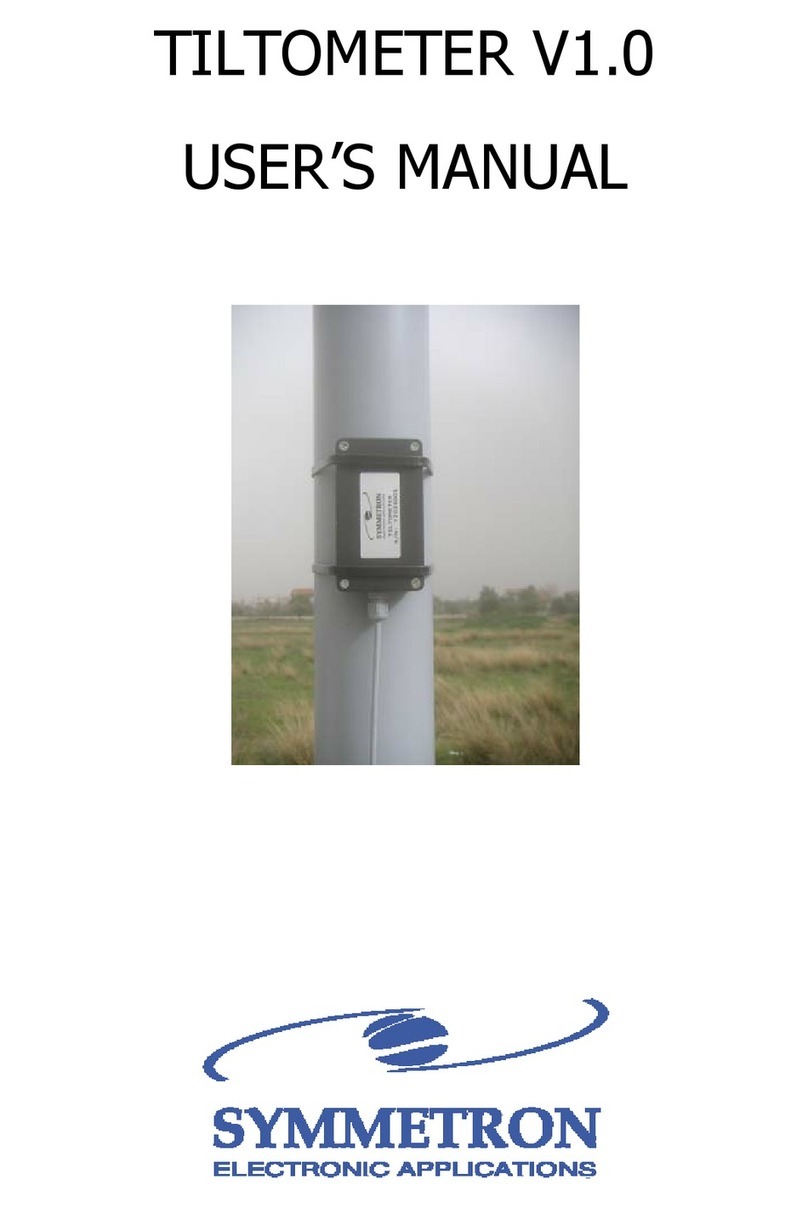
STYLITIS-10 INSTALLATION GUIDE [0516]
CONTENTS
1. GENERAL ............................................................................................................ 3
2. LOW-LEVEL AC ANEMOMETER. .......................................................................... 4
3. REED ANEMOMETERS OR RAIN GAUGES. .......................................................... 6
4. NRG MAX #40 ANEMOMETER ............................................................................ 8
5. VECTOR A100K, L2, LM ANEMOMETER. ............................................................. 9
6. THIES FIRST CLASS ANEMOMETER. ................................................................ 12
7. WIND VANE NRG 200P..................................................................................... 13
8. TEMPERATURE PT100: 4-WIRE, CURRENT EXCITATION................................. 15
9. TEMPERATURE PT100: 2-WIRE,VOLTAGE EXCITATION .................................. 19
10. TEMPERATURE-HUMIDITY (VARIOUS) ........................................................ 22
11. PYRANOMETER LICOR LI-200SZ .................................................................. 25
12. PYRANOMETER SKYE SKS-1110 ................................................................... 27
13.CONNECTION AND SETUP OF OTHER USED PYRANOMETERS...................... 28
14. OTHER USED ANALOG SENSORS .................................................................. 29
15. 4~20MA TRANSMITTERS.............................................................................. 30
16. SYMMETRON TILTOMETER ........................................................................... 32
17. OPEN COLLECTOR SENSORS (ENERGY METERS).......................................... 35
18. VOLTAGE AND CURRENT SENSORS .............................................................. 36
19. SMALL RELAY DRIVING BY A DIGITAL OUTPUT........................................... 41
20. SOLAR PANEL CONNECTION......................................................................... 44
21. LOGGER QUICK CHECK ................................................................................. 45
22. CONNECTION EXAMPLE ................................................................................ 46
Copyright 1998-2016, The Symmetron Company.
Updated: May 2016.
No part of this publication may be reproduced, stored in a retrieval system, or
transmitted, in any form by any means, without the prior written permission of
Symmetron Company. Information furnished by Symmetron is believed to
be accurate and reliable; however, no responsibility is assumed for its
use. No license is granted by implication or otherwise.
Symmetron is a registered trademark and Stylitis is a trademark of the
Symmetron Company. All other trademarks belong to their respective owners.
SYMMETRON ELECTRONIC APPLICATIONS
TEL: +30-210-603-4002 FAX: +30-210-603-4003
e-mail: info@symmetron.gr Web: http://www.symmetron.gr/
Made in Greece.
REFERENCES:
Stylitis-10 User’s Manual.
Individual sensor Manuals.




























